How To Setup Tftp Server On Windows 10
Network admins use TFTP Servers every day to transfer images, configuration files, firmware, etc. to their networking devices.
TFTP is uncomplicated on its own and does not demand any sophisticated messaging to piece of work.
Of course, having no overhead is terrific, but there is a downside; information technology does non provide any encryption and authentication mechanisms.
Although TFTP has no built-in security, network admins employ it for elementary and fast file transfers inside LANs.

And all-time of all, it can be used for remote connections by hardening its security with the correct server/client software.
In this step-by-step tutorial, you'll learn how to set up and configure TFTP on Windows 10.
Nosotros'll learn how TFTP works, and how to set it up on the client and server.
Let'southward go started!
What is TFTP?
TFTP (Trivial File Transfer Protocol) is a simple file transferring mechanism adult as a "lighter" version of FTP.
Information technology attempts to over-simplify and downsize the functionality of FTP.
Instead of using the full TCP implementation, TFTP relies on the connectionless and unproblematic UDP transport over port 69.
TFTP merely allows unidirectional file transferring.
Information technology provides zero control and has low overhead.
The original idea of creating TFTP was to provide booting for disk-less computers or workstations that didn't have enough memory or disk.
These disk-less workstations usually do not have access to the full TCP/IP stack, then they need to obtain configuration data such equally DHCP or BOOTP from some other server.
TFTP uses a client/server communication model.
As as you tin can see from the bulletin exchange below, the TFTP server sends a cake of data and waits for the acknowledgment earlier sending the adjacent i.
A host sends a Request to Write (WRQ), the server responds with an Acknowledgement (ACK), so the host sends data.
The host tin can likewise transport a Request to Read (RRQ) then the server sends the data and waits for an acknowledgment.
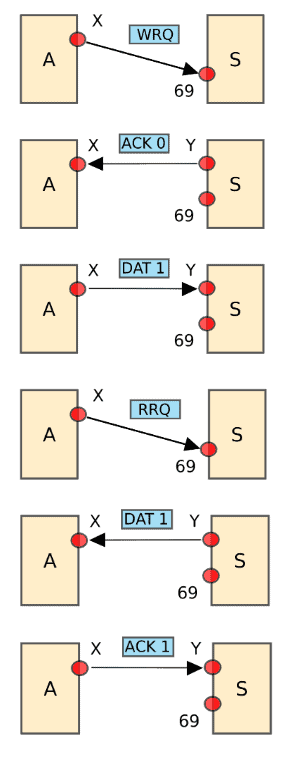
Today TFTP is commonly used for transferring configuration files and firmware images from and to networking devices.
It is also used for network booting past diskless nodes that need booting from the LAN.
TFTP is very easy to implement and use.
But it is non a secured transfer method.
It does not provide a login or access control mechanism, so it is more common in LANs.
Preparing your TFTP Environment
A TFTP server is a must-have slice of software in every network admin's toolkit.
Cisco, Huawei, Netgear, and many more than network appliances use TFTP for upgrading, bankroll-up, and saving configuration files and firmware.
Fortunately, yous can set up and configure a TFTP server on your Windows 10 car. You'll demand the following postal service if you're looking for a TFTP client for Windows vii
SolarWinds TFTP Server is lightweight and uniform with Windows x.
It is a standalone free tool utilize for fast and easy network file transfers.
Download TFTP Server Free!
Prerequisites Before We Starting time
When setting up your TFTP server for the start time, consider the post-obit requirements:
- Download the TFTP Server:
To start, you'll need to get the software. Download Solarwinds TFTP Server from its official site. The software is 100% free. - Take Admin Rights:
Setting a TFTP server requires an ambassador account. - Have a Root Folder Ready:
In the end, the thought of using TFTP is to transfer files. Since you are configuring a TFTP server, you'll need to have a folder storing all transferable files, such every bit Os firmware, configuration files, DCHP, etc. - Port forwarding:
TFTP clients might be able to access the server within the local network area without any issues, so if yous don't need remote file transfers, skip the port forwarding. But if TFTP clients are located beyond the WAN, they demand their traffic to exist forwarded to the right destination. Port Forwarding is a setting in the local router that redirects requests from IP address and port number from WAN to another service on the LAN. To permit TFTP requests from remote TFTP clients into your LAN, you volition demand to log into the router and forward the UDP port 69 to the IP accost of your server. - Configuring Port Forwarding:
This varies from router to router. Mostly, most routers have it under Advanced Setup > NAT > Port Forward. Brand a new entry on the list equally Port (69) > UDP > IP Address (your IP) - Allow local firewall rules:
The local firewall might block TFTP file transfers. To allow the TFTP client to successfully request data to the TFTP server, avoid any firewall that might be blocking the connection. If possible, configure the firewall inbound/outbound rules to permit TFTP traffic. In the same manner, make sure that there are no local firewalls or routers with ACLs blocking the TFTP connection.
Setting upwardly a TFTP Server on Windows x
And then, now y'all accept the TFTP surroundings ready.
You downloaded the TFTP server software, have admin rights on the server, have the root binder with all files, made the right configurations on the local router, and you are sure that nothing is blocking your TFTP connexion.
Let's go ahead and install the TFTP server:
- Unpack the nix drive downloaded from the SolarWinds TFTP server and open the executable file. The SolarWinds TFTP Wizard will open, click on "Adjacent".
Download Gratis!

- Click "Browse" to choose a destination location.

- Once the SolarWinds TFTP Server Setup finishes, click "Finish".

- Open up the SolarWinds TFTP Server. The panel should wait something like this…

Configuring Security
TFTP is known for its lack of security. It does not take whatever encryption mechanism and does not back up any client/server hallmark methods.
Without encryption and authentication, a hacker could easily spoof the TFTP server and compromise the authenticity of critical files such as routing configuration and DCHP.
But despite that lack of security, TFTP is still the preferred method for quick and easy file sharing on networking devices.
Having no encryption and hallmark makes TFTP fast and without much overhead.
Still, some TFTP server software tin can provide some features that guarantee a certain level of security.
For example:
- Restrict the use of the server to a sure range or single IP addresses.
- Allow or restrict certain types of file transfers. For example, simply ship, receive, or both.
To configure IP accost restriction and file transfer types in the Solarwinds TFTP server
- Become to File > Configure.
- Go to the Security tab.

- By default, Solarwinds TFTP Server will allow all IP addresses to send/receive files. But you may as well want to restrict the access to the TFTP server to specific IP addresses. If you want to restrict the server to a few networking devices, get ahead and click on "But let the following IP addresses to send/receive files," and then click on "Add".
- In the following screen, you can ascertain the IP address or range of addresses. For example, nosotros are restricting access to sending/receiving files to the devices with IP from 192.68.0.100 to 192.168.0.120.

- In the same Security tab, you lot can also restrict transfer types. When yous restrict IP addresses and transfer types, your security can be dramatically improved. For example, you may only want to allow sending files to a specific router.

- Click Ok.
Binding the Server to Specific IP addresses, Subnet, or interfaces
The tool we're using also comes with "Server Bindings," which is another fantastic feature that tin ameliorate security.
Server Bindings is similar to restricting IP addresses, except that you can customize this restriction based on your local TFTP server network interfaces.
If your server has more than ane interface, you can customize its connectivity based on "source IP" or "subnet." In other words, you lot can limit the number of bachelor interfaces that the TFTP server is listening to.
By default, the TFTP server volition process the requests from clients received from any network interface
- If you want to customize the server'due south bindings, for instance, allow an entire subnet (from an interface) and let a unmarried IP on another, get to File > Configure > Server Bindings, and click on "Use custom server binding."
- Y'all likewise have the option to demark to all addresses in
 the list that you provided or go through the list in descending social club. Once, you finished, click "OK
the list that you provided or go through the list in descending social club. Once, you finished, click "OK
Configuring the TFTP Server
Beginning, let's make sure that the service has started.
If you find the following bulletin: "TFP Server service status: stopped," try clicking the "First" button to starting time the TFTP service in the server application and expect a couple of seconds.
If it goes "stopped" again, try the post-obit.
- Go to Windows services. Open Windows search bar and type "services". Or blazon the Win+R keys to open the Run awarding and type "services.msc". Make sure to run "services.msc" equally an administrator.
- Find the service "SolarWinds TFTP Server" and double-click it. Make sure that its Startup Type is "Automatic" and if you see the Service status: Stopped, click the "Start" push button.
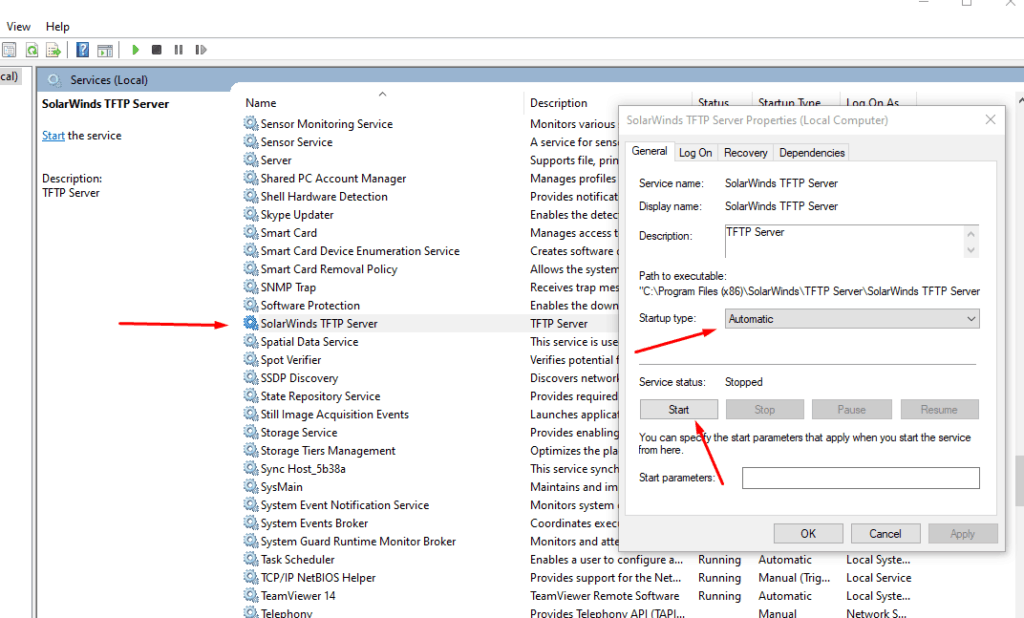
- If yous nevertheless see the service "Stopped," disable any Antivirus or Firewall and test again. I of these applications might be blocking communication through port 69.
Configuring Other Parameters
- A useful setting for easier access to the awarding is to enable "Add together TFTP Server to Windows System Tray".
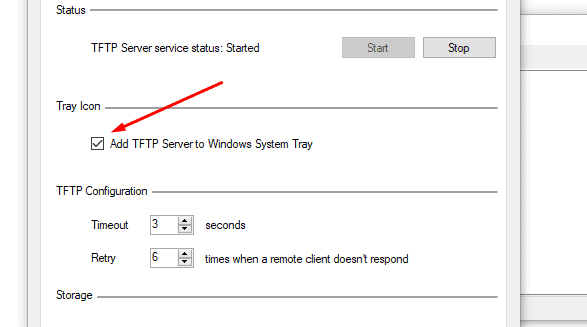
- You tin can get out Timeout and Retry options, with their default settings unless you are testing the TFTP environs
- TFTP timeout: This is the TFTP session timeout in seconds.
- Retry: The number of times, the server will retry to transmit a parcel when the TFTP customer doesn't answer.
- Finally, let's prepare upwards the "TFTP Server Root Directory". This is the folder where all your files received from other devices volition be stored, or where you will store the files that will be sent to other devices.
- Go to "Storage" > "Browse". Cull a new binder or leave the "C:\TFTP-Root" folder created by default.
- Click on "Ok".
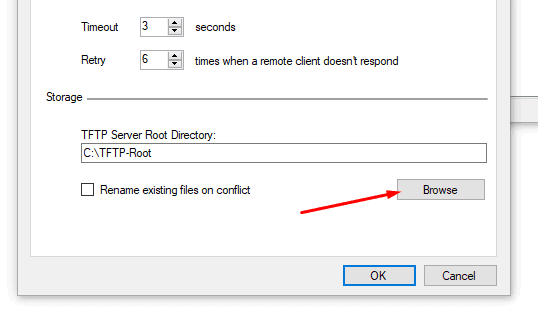
Setting up the TFTP Client
The TFTP Client depends on the successful installation and configuration of the TFTP server. The client is probably the one that yous will be using the nigh.
The only chore you might demand to do with the server is to update the shared files and input/remove some IPs.
When using the TFTP server, don't forget about the following settings (already mentioned).
- The TFTP server service has to be up and the application is running.
- Configure the right TFTP folder.
- Make sure no Firewall and Antivirus is blocking the application and connexion.
- If you are file sharing to a remote location, don't forget about port forwarding.
- Make sure all your TFTP clients can accomplish your TFTP server.
From the TFTP client
Most networking devices already have TFTP enabled. For example, to transfer a Cisco Switch image from the server to the device, you would have to specify the IP accost of the TFTP server on the customer (Cisco Switch).
Every bit you can see from the screenshot beneath, this switch does not accept any configuration or image filename.
It does accept a default accost and a TFTP address. So to receive these missing files, you can use the IOS command "copy tftp startup-config [ip address of the TFTP server]".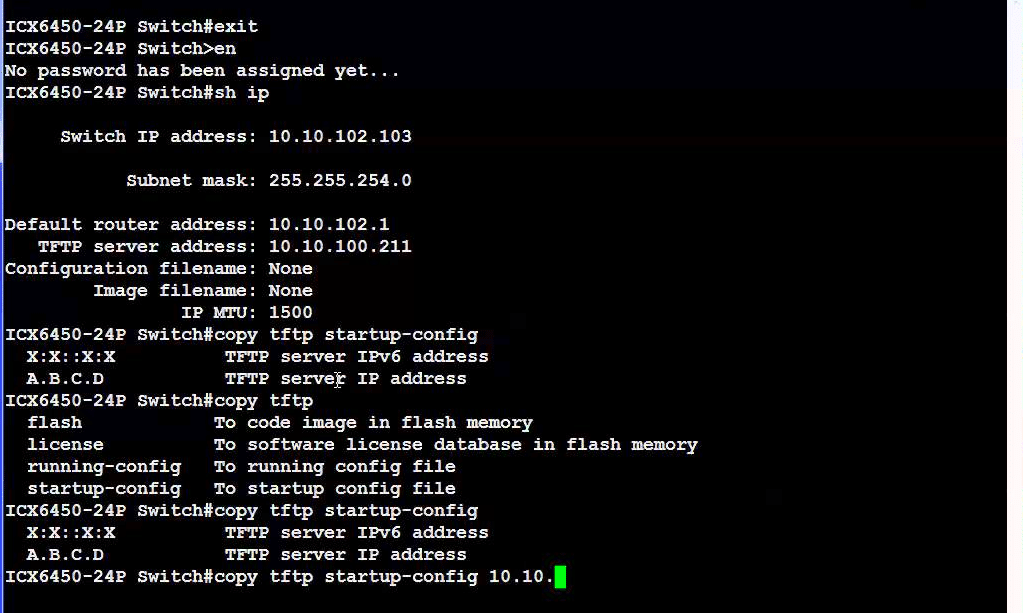
Some other case, from a Huawei Switch (screenshot below).
The starting time line (TFTP get) downloads the files from the TFTP Server (192.168.0.2) to the switch.
The second line (TFTP put) uploads the files from the switch device to the TFTP server.
But networking devices are not the only ones that tin can run TFTP clients. Y'all can also run the client on a Windows organization.
Install TFTP Client on Windows 10
Fortunately, most Windows versions (servers and workstations) come with the TFTP client feature congenital-in, you lot merely have to enable information technology.
- Go to Windows Showtime and search for "Control Console" then click on "Programs"
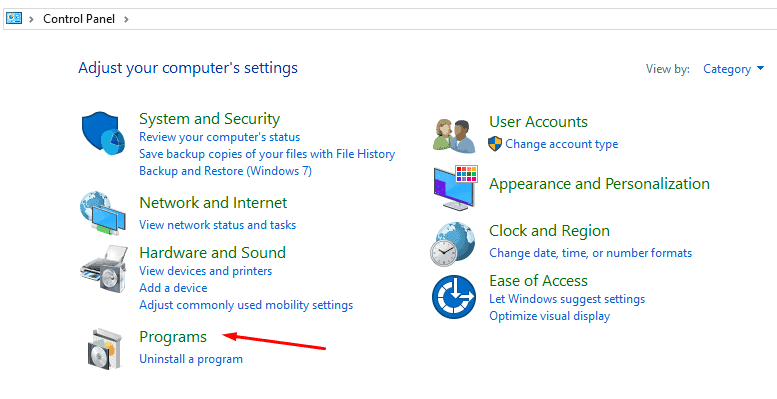
- Open Turn Windows features on or off.

- From the Windows Features list, find the TFTP Client feature and turn it on. Wait for the installation to complete and click "Ok".
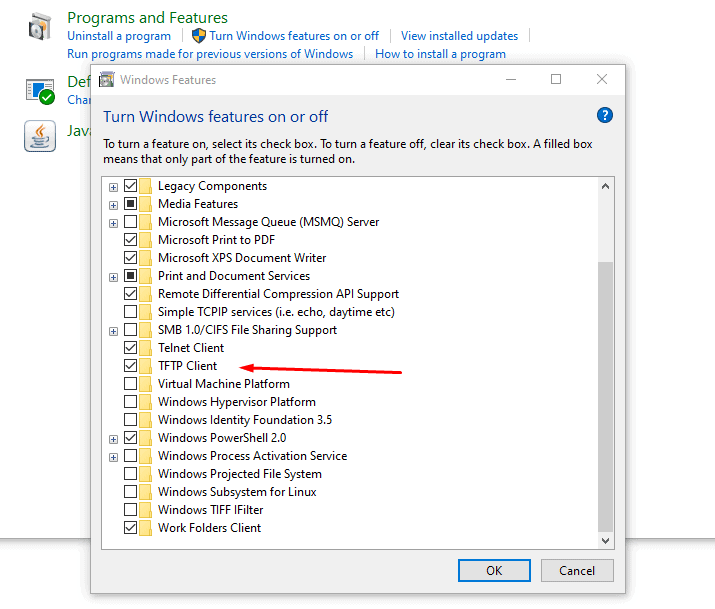
TFTP is considered an dangerous protocol, so Windows does not allow it by default. You will take to either turn off the Windows firewall (which is not recommended) or add an exception on the Firewall for the TFTP Client.
Let'due south open the Windows Firewall and configure the rules and exceptions to allow TFTP.
- Open the Windows Start menu and type "Firewall" > open the "Windows Defender Firewall with Advanced Security," and run information technology as an Ambassador.
- Make sure that the firewall is enabled, and click on "Let an app or characteristic through Windows Defender Firewall".
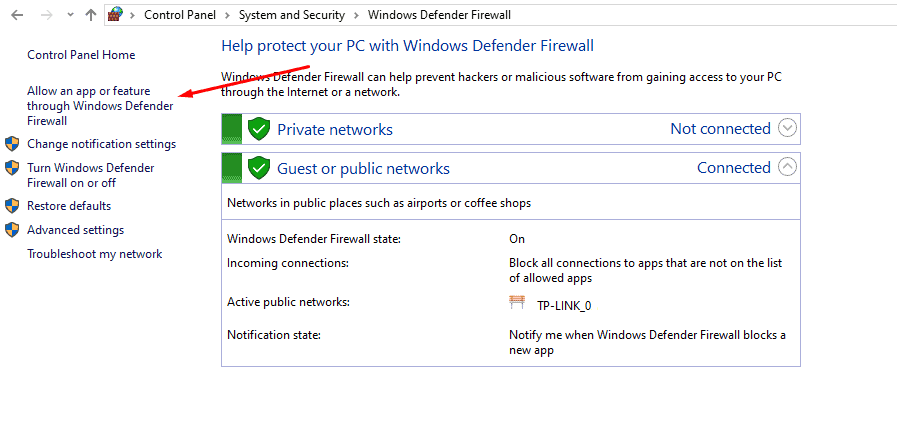
- Click on "Change Settings," then "Allow another app".
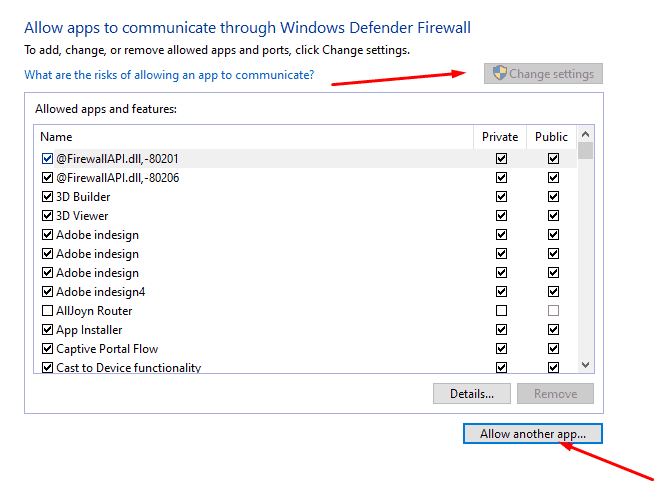
- Click on "Browse" and notice the TFTP.exe from the System32 folder and click on Open. Then click on "Add".
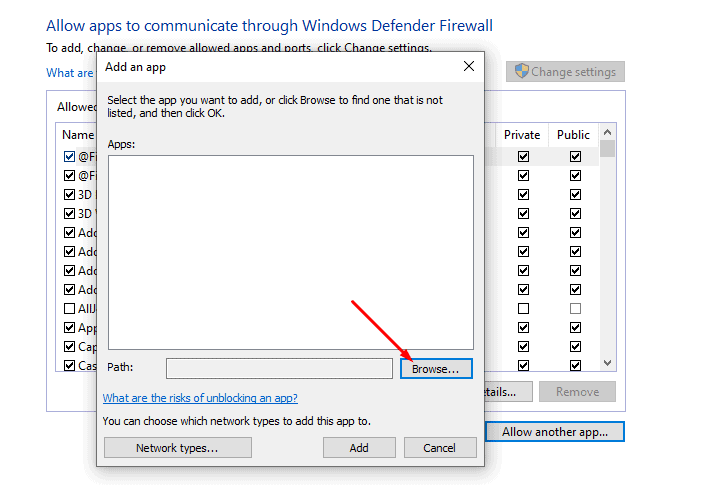
- You can now, detect the application on the Windows Defender Firewall, enable both Private and Public.
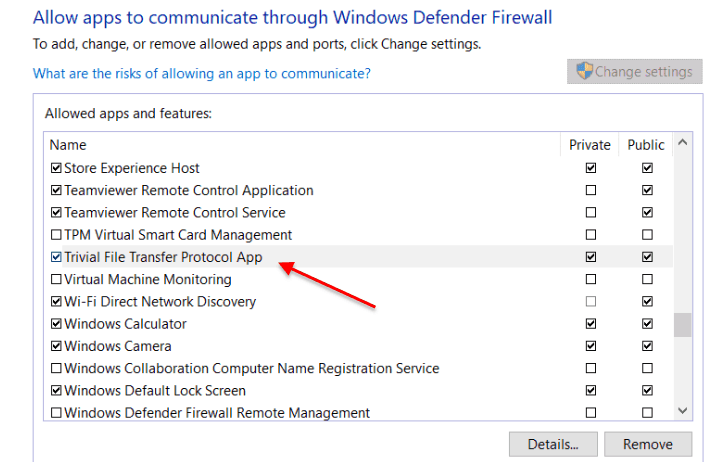
Transferring Files with TFTP
Now that yous enabled the native TFTP customer in Windows, you tin use it to transfer files between the TFTP server.
As mentioned before, brand certain that the files are nowadays in the root folder and that the client and server can reach each other.
The TFTP client runs through the command line interface. The control sytax is:
tftp [-i] [<Host>] [{go | put}] <Source> [<Destination>]
Where:
- – i : Transfer in binary way [also called octect]. If you don't specify this parameter, the transfer goes in ASCII mode, which is a regular text file transfer.
- Host: Specifies the local/remote reckoner (server).
- Put: transfers the source file [on the local computer] to the file on the destination [remote estimator]. Use this control to transport a file.
- Become: Downloads [transfers] the file from the destination remote calculator to the local computer. Apply this control to receive a file.
- Source: Specifies the source file [with the path] to transfer.
- Destination: specifies the destination file [with the path] to become.
An example of using the TFTP control on Windows x:
In this example, nosotros will upload a firmware prototype file [.bin] to the TFTP server [192.168.one.20]. We volition use the TFTP customer in Windows and transfer the file using binary mode.
- Permit's open the Windows control prompt. Open the Windows search and type "cmd," or press the Win + R > Open the Run and type "cmd".
- Go to the directory where the firmware is stored (or specify the entire path).
- Type the command TFTP -i 192.168.1.xx PUT firmware.bin
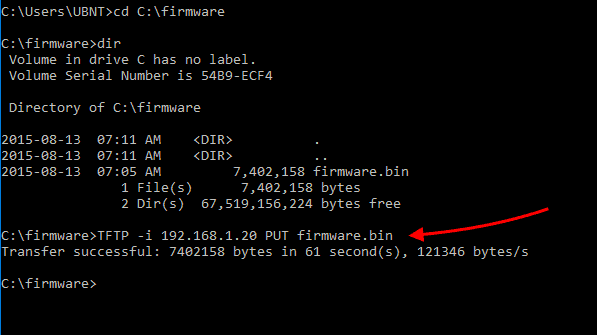
Concluding Words
TFTP is a terrific and often misunderstood transferring method.
Although it has a bad reputation for its lack of security, information technology doesn't accept much overhead, making information technology a reliable, quick, and like shooting fish in a barrel transferring machinery.
You tin can use it in enclosed LANs or WANs, where speed reigns over security.
Setting up a TFTP server on Windows ten is straightforward. Simply download Solarwinds TFTP Server and configure it, every bit shown in this tutorial.
If your TFTP client is a networking device, it will probable take the TFTP service already enabled. But if you lot want to transfer files to a Windows 10 workstation, you can enable the TFTP built-in feature.
We promise that this tutorial was informative.
Delight comment if you have any questions about the setup and configuration of the TFTP on your Windows ten.
Source: https://www.pcwdld.com/tftp-on-windows-10
Posted by: beckerstroardlean.blogspot.com

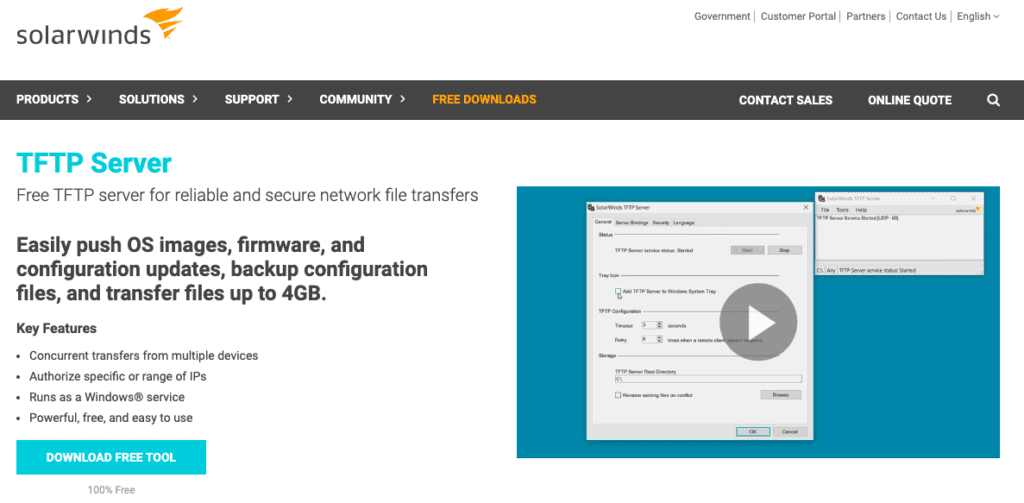
0 Response to "How To Setup Tftp Server On Windows 10"
Post a Comment